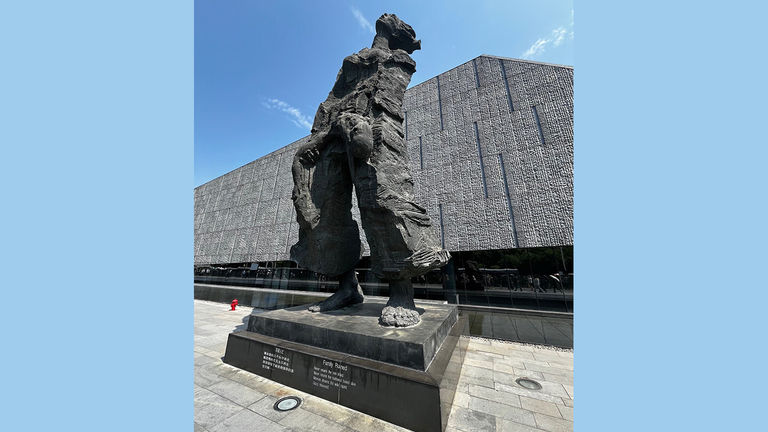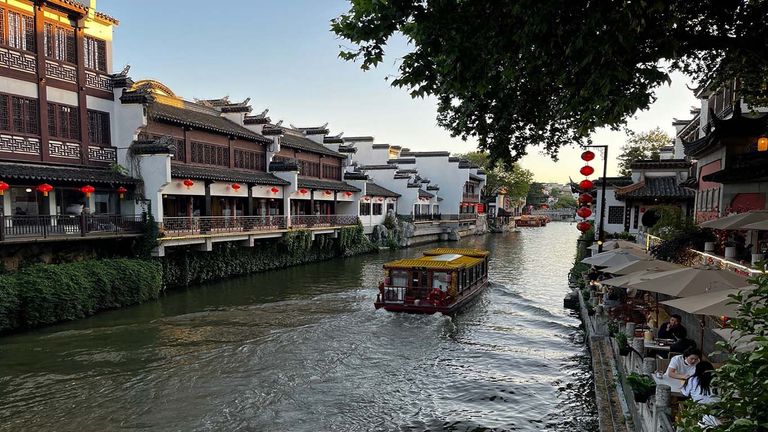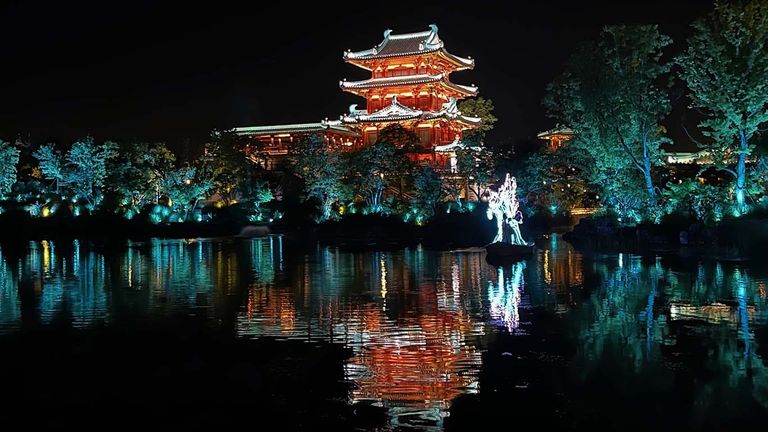A cultural and historic destination within China, the city of Nanjing offers a seamless blend of modernity and antiquity.
Just an hour’s flight (or a 90-minute bullet train ride) northwest from Shanghai, China, and along the southeastern banks of the Yangtze River lies Nanjing, the capital of China’s Jiangsu province and home to 9.55 million residents.
Here, visitors will find a study in contrasts — scenic nature trails and sloping mountains rub shoulders with mega shopping malls, soaring skyscrapers and historic pagodas. And while Nanjing has traditionally been off the beaten path for Western visitors, it’s poised to make a splash in China’s tourism scene: Whether a client is interested in history, art, culture or technology, the city delivers a fully immersive experience paired with contemporary comforts.
Here’s how to make the most of a visit to Nanjing.
Honoring Nanjing’s History
Although urbanites may find it easy to while away their time by exploring the modern delights of the city, taking some time to uncover Nanjing’s storied history and rich, cultural ties should also be a priority.
Although the city served as China’s capital throughout 10 dynasties (spanning a period of 1,800 years), today’s visitors may associate it with a more recent, darker chapter. The Nanjing Massacre, which took place over a period of six weeks between 1937 and 1938, involved the killing of nearly 300,000 residents by the Imperial Japanese Army. Although a sobering experience, no trip to Nanjing is complete without a stop to the Memorial Hall of the Victims. Its exhibits — which comprise photography, videography, written word, sculptures, artifacts and, most hauntingly, the remains of a mass grave site — are also an important reminder of the city’s resilience. The message “Remember history, but not with hatred,” greets museum-goers at the site, which has received some 60 million visitors since it was built in 1985.
 Memorial Hall of the Victims
Memorial Hall of the Victims
Credit: Emma WeissmannHistory buffs will also enjoy learning about Nanjing’s political significance within the country. As one of China’s Four Ancient Capital Cities (alongside Beijing, Xi'an and Luoyang), Nanjing’s political roots run deep, and hints of China’s ancient past can be found around nearly every corner.
Recommend that visitors take some time to walk along Nanjing’s Old City Wall, a preserved fortress in the middle of the city that was built in 1368 by the Hongwu Emperor after the founding of the Ming Dynasty. Or, suggest they embark on a tour of the 600-year-old Presidential Palace, a museum that was formerly the official residence for several government offices.
Active travelers looking to get their hearts pumping may also enjoy a visit to Zijin Mountain Scenic Area (at the foot of Purple Mountain), where they can make the trek up the attraction’s stately steps to Dr. Sun Yat-sen’s Mausoleum, which — in addition to providing beautiful birds-eye views —honors the founding father of the Republic of China. Mingxiaoling Mausoleum, a nearby UNESCO World Heritage Site, can be combined with Dr. Sun Yat-sen’s Mausoleum and visited in the same day; it’s the final resting site of the Ming Dynasty’s founder, and is located within 290 acres of scenic gardens.
 Dr. Sun Yat-sen Mausoleum
Dr. Sun Yat-sen Mausoleum
Credit: Emma WeissmannCultural Appeal
Clients need not be religious or practicing Buddhists to enjoy Usnisa Palace, situated in the Niushou Mountain Cultural and Tourism Zone, which today serves as a pilgrimage site. The palace’s stunning architecture and sacred spiritual significance, matched with its ornate design, are breathtaking. (Pro tip: Visit early, before the crowds arrive.)
 Usnisa Palace
Usnisa Palace
Credit: Emma WeissmannOr, for a more modern-day view of the city, recommend visitors head to Nanjing’s downtown district, which is always abuzz with contemporary restaurants, stores and nightlife. Deji Plaza may remind visitors of home — international stores and designer labels are found here, in addition to its multi-level, Instagram-worthy washrooms that have taken social media by storm (and which, reportedly, cost $5 million to build).
And just a 10-minute drive from there lies Nanjing Confucius Temple, originally built in 1034 as a shrine to the philosopher, but now a trendy cultural and commercial district along the Qinhuai River. Visitors will find shops, street food vendors, canal river cruises, nighttime performances and hordes of local women dressing in Hanfu-style clothing posing for professional photoshoots.
 Qinhuai River Cruise
Qinhuai River Cruise
Credit: Emma WeissmannClients can even have their own Hanfu photo experience with a professional photographer at Jinling Traditional Town, where they will don traditional dress, hair and makeup and have a photoshoot with a professional photographer in the town (a replica of a traditional ancient Chinese village). The attraction, which was built during the pandemic, is nestled among winding gardens and creeks. After their photoshoot, visitors can walk along the quaint streets, explore a history museum (complete with a 3D virtual reality experience), see dance performances, browse boutiques, admire stunning architecture and lighting displays and more.
 Jinling Traditional Town
Jinling Traditional Town
Credit: Emma WeissmannGetting There: Visas and Transit Visa Exemptions
Visitors to China from the United States will need a tourism visa, which they can apply for via the Visa Office within the Consulate General of the People’s Republic of China (with physical locations in Los Angeles, New York, Chicago, San Francisco, Houston and Washington, D.C.). The application process can be lengthy and involves submitting a physical copy of a client’s passport — along with supporting documentation and the visa application — to the Visa Office, so the use of a visa service may help facilitate and expedite the experience.
Or, clients from 54 different countries (including the United States and Canada) who are transiting through China may be eligible to receive a transit visa exemption. The exemption applies to clients traveling within 31 ports in 23 cities and 18 provinces within China — including Beijing, Shanghai and Nanjing — while en route to a third country. These clients must pass through the airport with a confirmed flight onward within the designated timeframe (either 72 or 144 hours). For stays less than 24 hours, no visa is required.